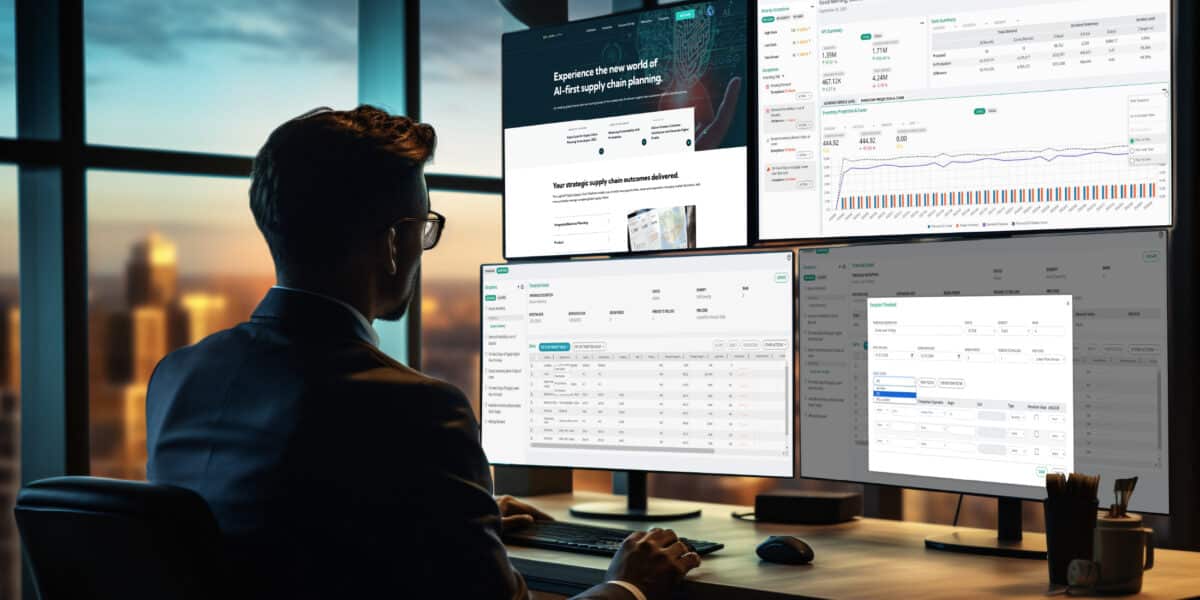
Unraveling from the complexity of supplier disruption, unexpected consumer behaviors, and limited resources, supply chain organizations are looking to learn from the shockwaves of the past year. But this is not the time to focus on everything that went wrong. Priorities need to be set to drive changes that are meaningful to customers and the overall health of the business.
Yet software giants have seized the recent explosion of technology advancements – such as cloud, predictive analytics, artificial intelligence, machine learning, and automation – to deliver modern, “one size fits all” enterprise resource planning (ERP) systems. Each system promises a wide range of scalable capabilities that can be extended and integrated across the value chain.
Although comprehensive, these ERP systems are actually a collection of standardized capabilities bundled into a single offering that works best with little to no customization. How can such a monolithic technology support a world of supply chains with unique challenges, goals, and network diversity?
Common Supply Chain Pitfalls Inevitably Emerge
While most supply chain organizations look to benefit from the acquisition, upgrade, or update of an ERP system, Gartner has estimated that 55% to 75% of all ERP-related initiatives fail to meet expectations. And even if the effort is successful, the function eventually encounters issues ranging from security breaches, go-live delays, and budget overruns, to disrupted operations and data-sharing bottlenecks.
The limitations of ERP for supply chain may be common, but they are avoidable. A deep partner ecosystem is generally available to help businesses overcome this complexity with a litany of extra services at an additional (and significant) cost.
Fortunately, it doesn’t have to be this expensive, risky, and inefficient. Companies can expand their search for technology beyond ERP. Doing so helps them define a best-fit strategy for improving supply chain operations and drive more tangible value without the exposure of unnecessary risk and additional complexity.
For example, organizations can leverage a purpose-built digital supply chain platform that uses data from their existing ERP and matches it to their new data model. This preconfigured integration capability helps ensure a successful and efficient project execution, which typically overperforms a complete migration from a legacy ERP to a more modern one. Companies also have the flexibility to integrate data from many other sources with ease, while maintaining the existing ERP and embedding advancements such as deep artificial intelligence, machine learning, and process automation.
Expanded Options Create Better Transformation Opportunities
Once business leaders widen their selection scope to include best-of-breed supply chain optimization solutions, the question is no longer about choosing the right ERP vendor. Instead, they are more focused on picking the right building-block solutions and integrating them to optimize their supply chain operations. It becomes apparent that ERP vendors limit their capabilities to serve low maturity supply chains, while the supply chain experts who deliver best-of-breed platforms enable attainment of the highest maturity possible.
Fender, the world’s top maker of stringed instruments and solid-body guitars, is an exceptional example of the power of this extended view. Intending to increase end-to-end visibility and drive measurable global performance, Fender improved its forecast accuracy, inventory control, and supply-flow synchronization. More importantly, it is also minimizing any internal and external constraints on its production capacity.
After a rapid implementation of Logility’s demand planning, inventory optimization, data management, and life cycle planning solutions, Fender realized an ROI in as little as six months. The flexibility and control of these function-specific solutions allow decision-makers to see how the business changes from one week to the next in the context of its strategic plans. As a result, the company is expanding through organic growth and acquisitions, while meeting the needs of new divisions, products, and markets.
An Imperative for Supply Chain Transformation
The debate over ERP and best-of-breed supply chain solutions is certainly still hotly contested – and rightfully so.
Some risks may be obvious, like any other digital transformation project. But with the proper steps, businesses can realize the advantages of an integrated supply chain management ecosystem without the drawback of custom development and rigid structure of ERP architecture and data.
Read more about how Fender was able to meet its total supply chain management requirements beyond the limitations of its ERP system here.

Written by
Scott Abbate
Senior Vice President
Short bio
Scott Abbate is a senior vice president with Logility, with more than two decades of experience diagnosing supply chain planning shortcomings and prescribing solutions. Scott has helped over 150 enterprises document the positive financial impact of attaining high P&L and Balance Sheet maturity in business cases for supply chain digital transformation.



